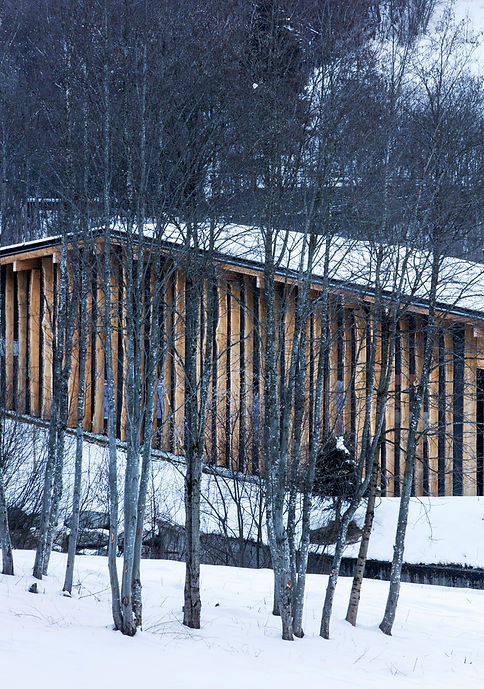
THEORIES OF ARCHITECTURE DESIGN
PROLOGUE
The concept of context in architecture have changed, how it changed? If we go back to a few century ago, context seems to be a very minor issue to architects that time, from just looking at historical context and responding to them, some look at geographical context that is the climate and topography, some look at the physical context that is the material wise. Now, from historical to physical context, every context is being consider when designing a building. So I could say that the important of contexts have grow to be even more important than a few century ago.
C O N T E X T A N D B U I L D I N G 2
Context in the future has change, change to a bigger picture, now context has much more to consider rather than just one. Solving contexts is always one of the fun part in architecture.
CONTEXT’S IMPORTANCE

Let’s look at Mont-Blanc Base Camp by Kengo Kuma, I think that Kengo Kuma always want to blend in his building as much as possible to the site. So from the aesthetic view of this building with the site seems to fit pretty well because of the material it uses and the height of the building that is so submissive to the other building. From the start, Kengo Kuma already aim to integrate as naturally as possible the project into the extraodinary mountainous landscape.



From material wise, he choose oak wood as facade’s material and the intention was to keep the natural and rough aspect of the oak. This is also because the natural and rough aspect of the oak wood has a very natural aesthetic that fit to the site.
The interior space is design to needs and feeling of the human, how humans that need light and what kind of light direction is needed, as we know kengo kuma is also an architects that play with light.He design the east side of the facade to be plain and not to have any opening, this is due to afternoon sun, so this is one of the context that is consider.The form also was design to fit the site because it is not very good to have a weird form that does not fit to the site. I could say that this building has design according to a mixture of context rather than one.

Now, let’s glimpse back to the past and have a look at Seagram Building by Ludwig Mies van der Rohe, the context that the architect consider most probably will be the aesthetic of the building because the building seems to fit the site well also by its usual rectangular form, and it also use the material of glass and metal to be the same as the building at the site. From this case study, I think that Ludwig Mies van der Rohe care less about the context by means and just follow what he wants, his style will be the rectangular geometric shape, although it fits the site but the sole reason of the form is not because of wanting to fit the site but rather a selfish reason of the architect.